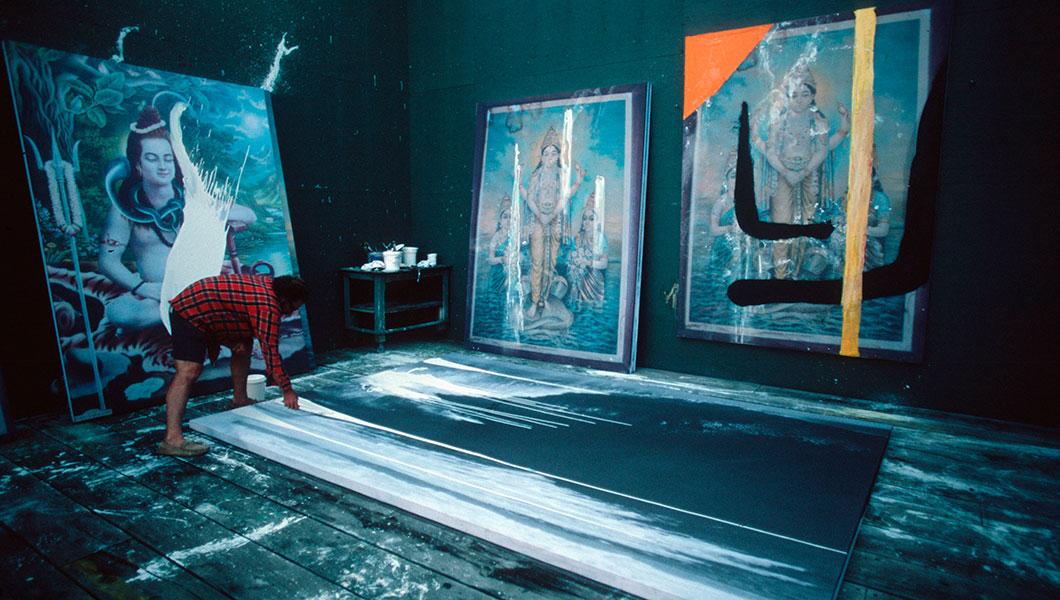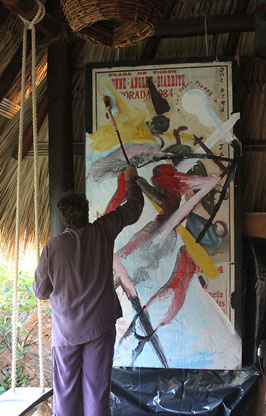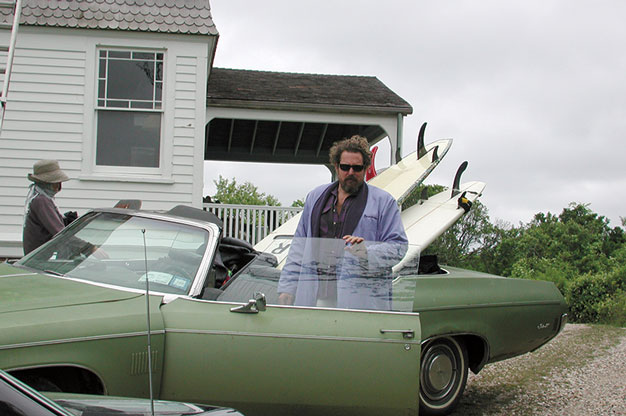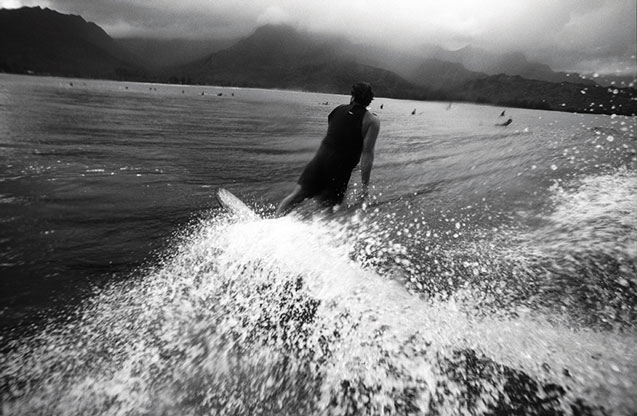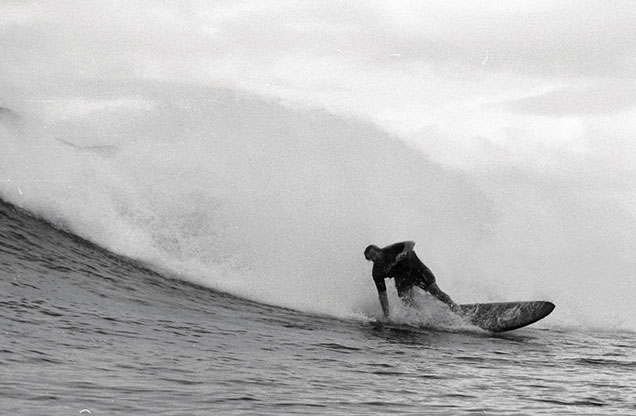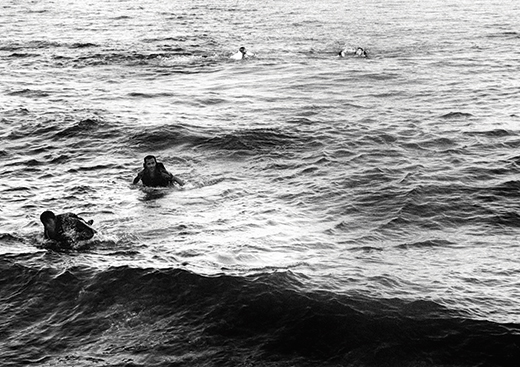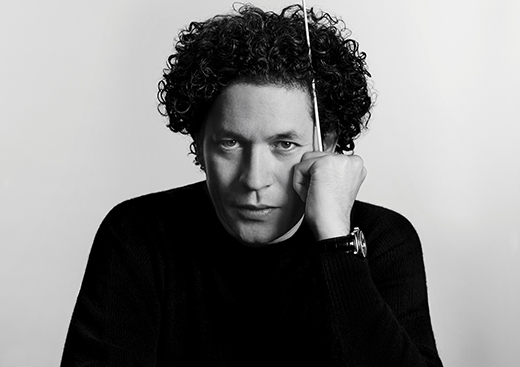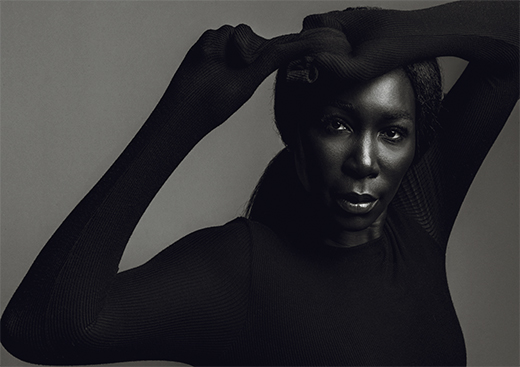It was 1995, and we were having one of those awkward folded-linen-napkin lunches in the middle of a Volvo commercial shoot. Our host was on the phone, and there was so much gossip going on around the table that no one seemed to notice, until he handed Herb the phone and there ensued that somewhat graceless pregnant silence while everyone tries to conceal their curiosity, but you could feel the questioning glances. Here we were, a family more comfortable on the beach, pushing the boundaries of appropriate behavior in the very conservative world of surfing, surrounded by commercial-industry professionals. Who in the hell would want to talk to Herb?
On the other end of the line: Julian Schnabel, who was regaling Herb with stories of their first meeting at a surf contest in Brownsville, Texas, in 1967, where a 16-year-old Julian lived with his family. There was laughter and true joy as they reminisced; theirs is one of those rare friendships that seem to pick up as though they had just spoken yesterday. Time was short—Julian was in production on Basquiat and the cameras were ready to resume shooting on the commercial we were working on. They exchanged numbers and as soon as our business commitments were complete, Herb got in the studio to send Julian the big-wave surf footage he had requested for his film.
Julian has a true passion for the art of surfing; ours is a bit more jaded being in the business, but the romance of the early years and the characters who make up the sport’s history have proved a great bond around which to build our mutual friendship. Julian’s generosity of spirit and encyclopedic knowledge of art, movies and literature was completely intoxicating to me. On one of our trips to his home in Mexico, Herb laid Julian’s carefully chosen nautical charts down on the yard’s raked gravel, with weather-polished rocks anchoring the corners and containers of mixed oil paint placed within easy access of Julian’s brushes, which were attached to long sticks so he could stand erect and achieve what he felt was the proper perspective. Dressed in a sarong, sleeveless plaid shirt and yellow-tinted horn-rimmed glasses, he painted his Navigation Drawings with a muscular abandon that was utterly amazing. The wind started to gust and blew sand into some of the paint, but Julian was undaunted as he made his marks on one chart after the other, sometimes circling back to add on or moving forward by skipping one or two. It was a creative dance choreographed by a master, and with the final stroke I knew I had been a witness to magic.
In the evenings under the thatched roof they would relive every wave ridden during the day, as surfers tend to do, and discuss how their performance could be made better with a little tweaking in board design. Julian created a logo for the boards that Herb shaped, which they would exclusively ride. Although technically long boards, these are not “logs,” which the length typically refers to; these are high-performance, down-rail, ultra-responsive, lightweight flying machines, for going fast and hanging high in the wave before sideslipping down the face. They were completely black, with a round logo laminated on the deck 24 inches from the nose—a painting from Julian’s Big Girl series along with the words “Blind Girl Surf Club” written in bold white lettering along the stringer on the bottom of the board. Each a custom-made work of art for peak surfing experience. It wasn’t long before a few other good friends were included in the clique, which had the feeling of a surf team from back when Herb first started competing in the mid ’60s. Their motto was adapted from an old Groucho Marx quote—“I wouldn’t want to be a member of any club that would have me as a member”—and with the likes of Christian and Nathan Fletcher, Vito Schnabel, Nathan Webster, Bruce and Andy Irons, Dustin Barca, Danny Fuller and John John Florence, the boards and coach jackets with the same logo are starting to be seen, recognized and coveted.
Julian and Herb plan surf trips whenever possible, and whether it’s Montauk, Mexico, Maui or Spain, it doesn’t matter—Julian always has a space to paint, Herb spends his time taking photos, and they surf when the tide is right. When most of the sport’s enthusiasts in the Northern Hemisphere are finalizing plans for their first trip into the frigid white winter land of their favorite ski resort, surfers from the rest of the globe are packing their quivers and starting the annual migration. Destination: the 7.5-mile strip of coral-sand beach on the north-facing side of the small island of Oahu known as the North Shore. From Haleiwa to Velzyland, there isn’t a place on the planet that can boast as many classic surf breaks in such a concentrated area, or as many surfers, photographers, writers, industry honchos, tattoo artists, boogie boarders, groupies, tourists and every manner of hanger-on that comes to experience the Triple Crown event where the WSL Surfer of the Year is crowned.
With the who’s who of the sport gathered on the beautiful strip of pristine beach, the waves thundering over the shallow coral reefs while the greatest tube riders and aerial masters jockey for position, to the delight of the screaming crowds; it is here, in the heart of hardcore surfing that Herb and Julian meet yearly to enjoy the shared passion for surfing that started on the beach in Texas so long ago. It’s in this environment where Julian paints surfboards for friends, helps Herb with the annual Wave Warriors photo shoot and paddles out for a few waves at Rock Point that he has a chance to enjoy the “surf life” for a couple of weeks. Surrounded by characters who risk their lives riding waves no sane person would paddle into, with some having explosive temperaments that belie their seemingly easygoing demeanor, Julian seems casually at ease while he and Herb enjoy the greatest surf show on Earth.
—


